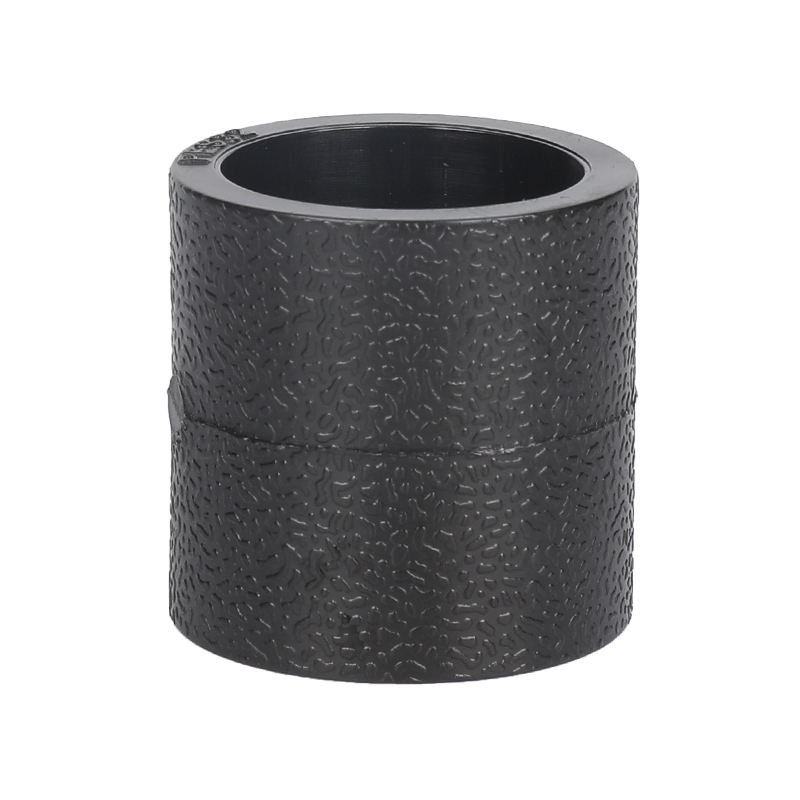HDPE 90 degree elbow butt fusion fitting produced ......
-

AddressZheJiang, China
-

Phone+86-17367068772
-

E-mail[email protected]
Can Socket Fusion Hdpe Fitting be used in urban water supply and drainage systems?
Yes, Socket Fusion HDPE Fittings can be used in urban water supply and drainage systems, and they offer several advantages for such applications.
High-Density Polyethylene (HDPE) is known for its exceptional durability. It is resistant to corrosion, rust, and scaling, which are common issues in metal pipes. This makes it particularly well-suited for water supply systems, as it ensures long-lasting performance even in environments where water chemistry may cause corrosion in other materials.
HDPE pipes and fittings are resistant to a wide range of chemicals, including those often found in urban water systems such as chlorine, acids, and alkalis. This makes Socket Fusion HDPE Fittings ideal for both potable water systems and wastewater or stormwater drainage systems.
Socket fusion is a method of welding HDPE fittings and pipes together by melting the pipe ends and fitting sockets with a specialized heating tool, and then pressing them together to form a strong, leak-free bond. This results in homogeneous joints with excellent sealing performance.
In urban water supply systems, preventing leaks is crucial for maintaining water pressure and ensuring efficient water distribution. The fusion joints created by Socket Fusion HDPE Fittings are highly reliable, minimizing the risk of leaks and offering secure connections that last for decades.
Socket Fusion HDPE fittings are available in a range of sizes, making them versatile for both small-scale and large-scale installations in urban infrastructure. Whether it is a residential water supply system or large-scale municipal drainage systems, Socket Fusion HDPE Fittings can accommodate a variety of pipe sizes and configurations.

The socket fusion method is relatively simple and does not require specialized welding skills, making it cost-effective and efficient for installers. This is especially beneficial in large urban water supply projects where minimizing labor time and complexity can lower overall installation costs.
HDPE pipes and fittings can handle a wide range of environmental conditions, from extreme cold to high heat. This is particularly important in urban systems where pipes may be buried underground, subject to temperature fluctuations, and exposed to UV radiation or environmental pollutants. HDPE's resistance to environmental stress cracking (ESC) also adds to its suitability for urban water supply and drainage systems.
HDPE is more flexible than rigid materials like PVC or metal, making it more resistant to cracking or breaking under stress, such as ground shifting or during construction. This is crucial for underground installations in urban settings where pipes are vulnerable to soil movement or other external forces.
HDPE is a non-toxic material, making it ideal for potable water systems. It does not leach harmful chemicals into the water, ensuring that the water quality remains unaffected. This is a critical consideration for urban drinking water supply systems, where maintaining water purity is essential.
The inner surface of HDPE pipes is smooth, which helps prevent the buildup of scale and biofilm. This results in better water flow and reduces the risk of blockages, particularly in wastewater or stormwater drainage systems. The smoothness also prevents the growth of bacteria, contributing to overall system hygiene.
HDPE is highly resistant to corrosion, scaling, and external environmental damage. This means lower maintenance costs over the life of the system, as there is less need for frequent repairs or replacements. This is especially important for urban water supply and drainage systems, where the cost of long-term maintenance can add up.
HDPE fittings and pipes are generally more affordable than other materials, such as metal or concrete pipes, which makes them a cost-effective option for large-scale infrastructure projects.
HDPE is fully recyclable, making it an environmentally friendly choice for urban water supply and drainage systems. As urban infrastructure becomes more focused on sustainability, using recyclable materials for water management systems aligns with green building practices and reduces overall environmental impact.
The production of HDPE materials generally has a lower carbon footprint compared to some traditional piping materials, contributing to the overall sustainability of urban water systems.
Socket Fusion HDPE Fittings are well-suited for urban water supply and drainage systems due to their durability, leak-free connections, resistance to chemicals and environmental stress, and ease of installation. Their flexibility and low maintenance requirements make them ideal for both potable water distribution and wastewater management in urban environments. Moreover, HDPE's non-toxic nature, smooth internal surface, and recyclability make it a sustainable choice for modern infrastructure projects. Whether for drinking water, stormwater, or sewage systems, these fittings provide a reliable, cost-effective, and long-lasting solution for the growing needs of urban water systems.
Product Display
-

HDPE 90 degree elbow butt fusion fitting
-

HDPE 45 degree elbow butt fusion fitting
HDPE 45 degree elbow butt fusion fitting produced ......
-

HDPE 22.5 degree elbow butt fusion fitting
HDPE 22.5 degree elbow butt fusion fitting produce......
-

HDPE equal tee butt fusion fittings
HDPE equal tee butt fusion fittings produced by in......
-

HDPE reducing tee butt fusion fitting
HDPE reducing tee butt fusion fittings produced by......
-

HDPE flange adaptor butt fusion fittings
HDPE flange adaptor butt fusion fittings produced ......
-

HDPE reducer butt fusion fitting
HDPE reducer butt fusion fitting produced by injec......
-

HDPE cross butt fusion fittings
HDPE cross butt fusion fittings produced by inject......
-

HDPE end cap butt fusion fitting
Mould injection hdpe end cap butt fusion fittings ......
-

PE/PPR socket fuison welding machine
PE/PPR socket fusion welding machine brief&fea......
-

Double U HDPE ground source pump fitting
Double U HDPE Ground source pump fitting produced ......
-

PIPE clamp HDPE ground source pump fitting
PIPE CLAMP HDPE Ground source pump fitting produce......
-
.jpg?imageView2/2/format/jp2)
Single U HDPE ground source pump fitting
single U HDPE Ground source pump fitting produced ......
-

U socket HDPE Ground source pump fitting
U socket HDPE Ground source pump fitting produced ......
 English
English Español
Español русский
русский عربى
عربى



Contact Us